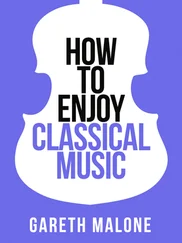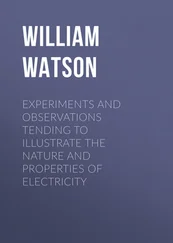Mark Changizi - Harnessed - How Language and Music Mimicked Nature and Transformed Ape to Man
Здесь есть возможность читать онлайн «Mark Changizi - Harnessed - How Language and Music Mimicked Nature and Transformed Ape to Man» весь текст электронной книги совершенно бесплатно (целиком полную версию без сокращений). В некоторых случаях можно слушать аудио, скачать через торрент в формате fb2 и присутствует краткое содержание. Год выпуска: 2011, Издательство: Perseus Books Group, Жанр: Старинная литература, на английском языке. Описание произведения, (предисловие) а так же отзывы посетителей доступны на портале библиотеки ЛибКат.
- Название:Harnessed: How Language and Music Mimicked Nature and Transformed Ape to Man
- Автор:
- Издательство:Perseus Books Group
- Жанр:
- Год:2011
- ISBN:нет данных
- Рейтинг книги:5 / 5. Голосов: 1
-
Избранное:Добавить в избранное
- Отзывы:
-
Ваша оценка:
- 100
- 1
- 2
- 3
- 4
- 5
Harnessed: How Language and Music Mimicked Nature and Transformed Ape to Man: краткое содержание, описание и аннотация
Предлагаем к чтению аннотацию, описание, краткое содержание или предисловие (зависит от того, что написал сам автор книги «Harnessed: How Language and Music Mimicked Nature and Transformed Ape to Man»). Если вы не нашли необходимую информацию о книге — напишите в комментариях, мы постараемся отыскать её.
Harnessed: How Language and Music Mimicked Nature and Transformed Ape to Man — читать онлайн бесплатно полную книгу (весь текст) целиком
Ниже представлен текст книги, разбитый по страницам. Система сохранения места последней прочитанной страницы, позволяет с удобством читать онлайн бесплатно книгу «Harnessed: How Language and Music Mimicked Nature and Transformed Ape to Man», без необходимости каждый раз заново искать на чём Вы остановились. Поставьте закладку, и сможете в любой момент перейти на страницу, на которой закончили чтение.
Интервал:
Закладка:
Musical notes are rendered as meandering through space. Music videos are built largely from people moving, and in a manner time-locked to the music. That begins to suggest that the visual system is under the impression that music sounds like human movement. But if that’s really what the visual system thinks, then it should have more opinions than just “music sounds like movement.” It should have opinions about what kind of movement music sounds like, and therefore, more exactly what the movement should look like. Do our visual systems have opinions this precise? Are we picky about the visual movement that goes with music?
You bet we are! That’s choreography. It’s not OK to play a video of the Nutcracker ballet during Beatles music, nor is it OK to play a video of the Nutcracker to the music of Nutcracker , but with a small time lag between them. Video of human movement has to have all the right moves at the right time to be the right fit for music.
These strong opinions about what music looks like make perfect sense if music mimics human movement sounds. In real life, when people carry out complex behaviors, their visible movements are tightly choreographed with the sounds they make—because the sight and the sound arise from the same event. When you hear movement, you expect to see that same movement. Music sounds to your brain like human movement, and that’s why, when your brain hears music, it expects that any visual of it should match up with it.
We just used your brain’s visual system as an oracle to divine the meaning of music, and it answered, “People moving.” Let’s now use your brain in another oracle-like fashion. If music has been culturally selected to fit the brain, then let’s look into which pieces of music are the best fit for the brain, with the idea that these pieces may be the best representatives of what music has been culturally selected to sound like. But how can we gauge which pieces of music are the best fits? One thought is that “symptoms” of a piece of music fitting the brain really well might be that the brain would process it especially easily, remember it easily, and internally hear it easily. Are there pieces of music like this?
Yes, there are! They’re called earworms —those songs with a tendency to get stuck in people’s heads. These pieces of music fit the brain so well that they can sometimes become nuisances. Earworms, then, may be great representatives of the fundamental structural features that have been selected for in music. What are the common qualities of pieces of music that become earworms?
When he was an RPI graduate student, Aaron Fath got interested in this question. He was dissatisfied with the standard line that songs become earworms because they are highly repetitive. Most songs are highly repetitive, he reasoned. Instead, he began to notice that a large fraction of earworms have a particular dance or move that goes along with the music. Examples of songs tightly connected to a particular movement include “I’m a Little Teacup,” “Macarena,” “YMCA,” “Chicken Dance,” “If You’re Happy and You Know It,” and “Head, Shoulders, Knees and Toes.” Let’s call these pieces movement-explicit . He also noticed that many other earworms were songs that accompanied specific visual movements (like a commercial jingle on television) or were dance songs (even if no specific movements were associated with them).
Aaron used two existing catalogs of earworms: a top 17 list of earworms from James Kellaris of the University of Cincinnati (obtained by polling 559 students), and a list of “top annoying earworms” from an online poll at the website Keepers of Lists (one user posted 220 songs, and 80 other users voted on whether or not they were earwormy; Aaron took the 38 songs having more than 10 votes). Movement-explicit pieces accounted for 23.5 percent and 18.4 percent of these lists. To gauge whether these are unusually large percentages of movement-explicit pieces, he sampled the #8 song on the Billboard Hot 100 Chart every nine months from 1983 to the present, and among these 38 songs, none were of the movement-explicit variety. As a second gauge, he sampled the #1 songs for each year from 1955 through 2006 (defined by Aaron—differently than Billboard does it—as the song released in a year that was #1 on the Billboard Hot 100 for the greatest number of weeks, and thus had the most staying power). Of these 52 songs, only one was of the movement-explicit kind (namely, “Macarena”).
These data suggest that earworms are disproportionately movement-explicit: about one-fifth of the earworms had specific dance moves that went with them, whereas less than 2 percent of top pop songs are of this kind. Our speculation is that songs become earworms not because they are movement-explicit so much as because they are consistent with the sounds of people moving —movement-explicit songs just happen to be under especially strong selection pressure to be consistent with the sounds of people moving. Although only a fifth of the earworms were of the movement-explicit kind, many of the others seemed to be in the “accompaniment” or “dance” category (although we have not yet tried to operationally measure these and compare them to control data sets). An alternative possibility is that when a song becomes tightly linked to movement, it is that very association that helps make it an earworm. This would suggest that music becomes more brain-worthy when packaged together with a motor program, and this, too, would appear to point to the music-is-movement theory.
It looks like music may be the sounds of human movement. We asked the expert on how things look: your visual system. Like presenting a deeply encrypted code to an oracle, we asked for the visual system’s interpretation of that enigmatic thing called music, and it had a clear and resounding response: music sounds like people moving and doing things, and thus must be visually rendered as humanlike motion in sync with the musical sounds. We also queried your brain in another fashion: we asked it which songs it most revels in, which ones are so earwormalicious that the brain loves to internally sing them over and over again. And the brain answered: the more movement-explicit songs are more likely to be the earwormy ones. The brain seems to be under the impression that music sounds like people moving.
Brain and Emotion
The opinion of visual systems and the hints of earworms are interesting and motivating, but we can’t just take them at their word. In order to make a solid case that music sounds like human movement, I need to show that the music-is-movement theory can leap the four hurdles we discussed earlier: “brain,” “emotion,” “dance,” and “structure.” Let’s begin in this section with the first two.
For the “brain” hurdle, I need to say why our brain would have mechanisms for making sense of music and responding to it so eagerly and intricately. For the theory that music sounds like human movement, then, we must ask ourselves if it is plausible that we have brain mechanisms for processing the sounds of humans doing stuff. The answer is yes. Of course we have humans-doing-stuff auditory mechanisms! The most important animals in the life of any animal are its conspecifics (other animals of the same species), and so our brains are well equipped to communicate with and “read” our fellow humans. Face recognition is one familiar example, and color vision, with its ability to detect emotional signals on the skin, is another one (which I discussed in detail in my previous book, The Vision Revolution ). It would be bizarre if we had no specialized auditory mechanisms for sensing the sounds of other people carrying out behaviors. Actions speak louder than words—the sounds we make when we act are often a dead giveaway to what we’re up to. And we’ve been making sounds when we move for many millions of years, plenty long enough to have evolved such mechanisms. The music-sounds-like-movement hypothesis, then, can make a highly plausible case that it satisfies the “brain” hurdle. Our brains surely have evolved to possess specialized mechanisms to hear what people are doing.
Читать дальшеИнтервал:
Закладка:
Похожие книги на «Harnessed: How Language and Music Mimicked Nature and Transformed Ape to Man»
Представляем Вашему вниманию похожие книги на «Harnessed: How Language and Music Mimicked Nature and Transformed Ape to Man» списком для выбора. Мы отобрали схожую по названию и смыслу литературу в надежде предоставить читателям больше вариантов отыскать новые, интересные, ещё непрочитанные произведения.
Обсуждение, отзывы о книге «Harnessed: How Language and Music Mimicked Nature and Transformed Ape to Man» и просто собственные мнения читателей. Оставьте ваши комментарии, напишите, что Вы думаете о произведении, его смысле или главных героях. Укажите что конкретно понравилось, а что нет, и почему Вы так считаете.












